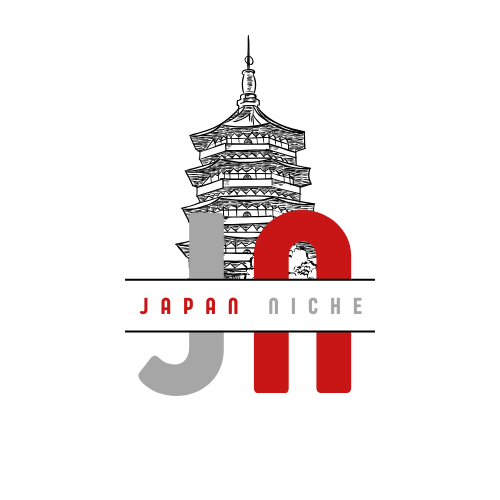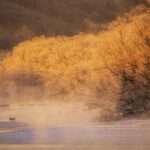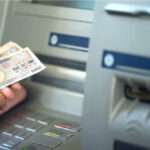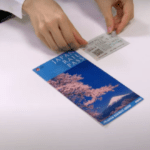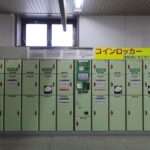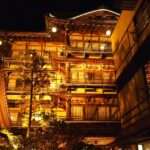Picture this: you’ve traveled thousands of miles to Japan, dreaming of those perfect pink blossoms, only to discover you’re two weeks too late! As someone who’s experienced both the magic and the mishaps of cherry blossom season in Japan, I can tell you – timing is everything. Did you know that in 2023, Tokyo’s cherry blossoms bloomed a full 10 days earlier than average? Talk about keeping us on our toes! After multiple sakura seasons and countless conversations with local experts, I’m here to share everything you need to know about catching these fleeting beauties at their peak.
Understanding Japan’s Cherry Blossom Forecast System
Let me tell you about my first cherry blossom forecasting mishap – I completely misunderstood the difference between “first bloom” and “full bloom.” Big mistake! I showed up in Tokyo right when the flowers started opening, thinking I’d have weeks to enjoy them. Spoiler alert: I didn’t.
The Japan Meteorological Agency (JMA) has this fascinating system for predicting bloom times. They track temperatures, look at historical data, and even monitor specific “sample trees” across the country. It’s pretty incredible how accurate they usually are!
Here’s what you really need to know about the forecast system:
- Kaika (first bloom) happens when about 5-6 flowers open on the sample trees
- Mankai (full bloom) occurs about a week later when 80% of the flowers are open
- The blossoms typically last only 7-10 days from first bloom to falling
I’ve learned to watch the forecasts like a hawk starting in January. The JMA updates their predictions regularly, and nowadays, I check multiple sources, including local Japanese weather apps. Trust me, it’s worth the extra effort!
Cherry Blossom Season Timeline by Region (2025 Predictions)
Oh man, do I wish I’d understood this regional progression my first time around! I remember planning a trip from Tokyo to Sapporo, thinking I could catch the blossoms in both cities on the same trip. facepalm
Let me break down the expected 2025 timeline based on historical data and early forecasts:
The Sakura wave starts in Okinawa way back in January (surprise!). I once met a photographer who’d been chasing the blossoms from south to north for three months – talk about dedication!
Here’s what we’re expecting for 2025:
| Location | Expected Sakura Dates 2025 |
|---|---|
| Kawazu | Early February |
| Tokyo | March 24 – March 31 |
| Kyoto & Osaka | March 23 – April 1 |
| Mt. Fuji | April 1 – April 6 |
| Hokkaido | April 26 – May 5 |
Remember to check real-time forecasts closer to your travel dates. Unpredictable weather conditions can significantly impact bloom times. For the latest update keep an eye on the Japan Meteorological Agency (JMA)
Pro tip: Be flexible with your itinerary and consider adding a few extra days to your trip. This will allow you to adapt to potential early or late blooms and make the most of your cherry blossom experience! In 2022, I planned everything down to the day, and then unusually warm weather caused early blooming. I ended up having to scramble to adjust my entire itinerary.
Top 9 Cherry Blossom Viewing Spots in Japan
Let me share a little secret – some of the most incredible viewing spots aren’t in any guidebook. But first, let’s cover the heavy hitters that absolutely deserve their reputation.
My absolute favorite spot? Meguro River in Tokyo. Here’s why: imagine a canal lined with 800 cherry trees, their branches creating a tunnel of pink blossoms overhead. Local tip: visit around 6:30 AM to avoid the crowds. I learned this after spending three hours shuffling through evening crowds my first time!
For the best viewing experiences, here’s my list:
Tokyo Area
1. Shinjuku Gyoen (新宿御苑)
This sprawling garden is my absolute favorite spot in Tokyo, and here’s why: it features over 1,100 cherry trees representing 65 different varieties. The ¥500 entry fee creates a much more peaceful viewing experience compared to free parks.
Best Features:
- Three distinct garden styles (Japanese, English, and French)
- Late-blooming tree varieties extend the viewing season
- Opens from 9:00 AM to 4:30 PM (last entry 4:00 PM)
- Excellent facilities including cafes and rest areas
Pro Tips:
- Visit on weekday mornings for minimal crowds
- Enter through the Okido Gate for shortest queues
- Best photo spots are near the English Garden’s lake
- Bring a zoom lens for close-ups of high branches
2. Ueno Park (上野公園)
This is Tokyo’s most famous cherry blossom spot, with over 1,200 trees lining the main pathway. I’ve developed a specific strategy for enjoying Ueno Park without getting overwhelmed by the crowds.
Navigation Guide:
- Start at the park’s south entrance near Tokyo National Museum
- Follow the cherry tree tunnel towards Shinobazu Pond
- Take the less-crowded western path for better photos
- End at Ueno Toshogu Shrine for stunning blossom-shrine combinations
Best Times:
- Early morning (6:00-8:00 AM) for photography
- Late afternoon (4:00-6:00 PM) for better light
- Nighttime illuminations (5:30-8:00 PM during season)
3. Meguro River (目黒川)
The 4km cherry tree-lined canal creates one of Tokyo’s most photogenic cherry blossom scenes. Having photographed this location dozens of times, I can tell you exactly where to find the best shots.
Prime Photography Locations:
- Nakameguro Station area for the densest canopy
- Bridge near Hibiya Line for reflection shots
- Restaurant terraces between Nakameguro and Ikejiri-Ohashi stations
Timing Secrets:
- Morning light (7:00-9:00 AM) for best photography
- Evening illuminations (6:00-9:00 PM) for romantic atmosphere
- Weekday afternoons for fewer crowds
Kyoto Region
4. Philosopher’s Path (哲学の道)
This 2km stone path lined with hundreds of cherry trees offers a perfect combination of natural beauty and traditional architecture. I’ve walked this path countless times, and each visit reveals new photo opportunities.
Detailed Walking Guide:
- Start: Ginkaku-ji (Silver Pavilion)
- Notable Stops: Honen-in Temple, Otoyo Shrine
- End: Nanzen-ji Temple
- Length: 2 kilometers
- Walking Time: 30 minutes (without stops)
- Recommended Time: 2-3 hours with temple visits
Best Photo Spots:
- Small canal bridges near Honen-in
- Reflection points in the stream
- Temple entrance frames
- Traditional merchant houses with blossom backgrounds
5. Maruyama Park (円山公園)
As Kyoto’s most famous cherry blossom viewing spot, this park requires strategic timing. The centerpiece is a massive weeping cherry tree that’s illuminated at night.
Park Areas Guide:
- Central Weeping Cherry: Best viewed from the wooden bridge
- Northern Section: Quieter with excellent picnic spots
- Southern Area: Connected to Yasaka Shrine
- Eastern Hills: Less crowded with good city views
Timing Strategy:
- 5:00-7:00 AM: Best for photography
- 10:00 AM – 3:00 PM: Avoid (peak crowds)
- 6:00-9:00 PM: Magical illuminations
6. Arashiyama District (嵐山)
The combination of cherry blossoms, mountain scenery, and the famous bamboo grove makes Arashiyama a unique viewing location. After visiting during different times of day across multiple seasons, I’ve mapped out the perfect exploration route.
District Highlights:
- Togetsukyo Bridge Area:
- Best viewed from Nakanoshima Park
- Morning light creates stunning reflections
- Cherry trees line both riverbanks
- Perfect for boat viewing (¥1,500 per person)
- Tenryu-ji Temple Grounds:
- UNESCO World Heritage site
- Combines zen gardens with cherry trees
- Opens at 8:30 AM (arrive early)
- ¥500 entry fee (worth every yen)
- Mountain Slope Viewing:
- Take Sagano Romantic Train
- Book tickets 1 month in advance
- 2-hour round trip
- Best afternoon light for photos
Timing Strategy:
- 7:00-9:00 AM: Best for bridge photos
- 9:00-11:00 AM: Temple visits
- 2:00-4:00 PM: Mountain train ride
- Sunset: River views
Off the Beaten Path Locations
7. Takato Castle Ruins (高遠城址公園), Nagano
This hidden gem is considered one of Japan’s top three cherry blossom spots, yet many international tourists miss it. The site features a unique variety called Takato-kohigan, known for its deep pink colors.
Castle Park Details:
- Over 1,500 trees in concentrated area
- Average peak bloom: Mid-April
- Entry fee: ¥500 (¥800 during festival)
- Festival dates: April 1-20 (typical)
Getting There:
- Take JR train to Inashi Station
- Local bus to Takato Castle (30 mins)
- Last bus returns at 5:00 PM
- Consider staying in local ryokan
Special Features:
- Night illuminations (until 9:00 PM)
- Local cherry blossom products
- Traditional performance stage
- Mountain backdrop views
8. Hirosaki Castle (弘前城), Aomori
The combination of castle, moat, and over 2,600 cherry trees makes this one of Japan’s most spectacular viewing locations. During my last visit, I discovered several secret spots that most photographers miss.
Castle Ground Zones:
- Inner Moat Area
- Petal-filled moat reflections
- Best morning light
- Closest castle views
- Popular boat rides
- Outer Bailey
- Cherry tree tunnels
- Historic garrison buildings
- Less crowded areas
- Best sunset spots
- Western Garden
- Weeping cherry trees
- Tea ceremony house
- Traditional gardens
- Photography platforms
Festival Information:
- Dates: Late April to Early May
- Extended hours until 9:00 PM
- Special evening illuminations
- Traditional performances
- Local food festivals
Photography Tips:
- Bring wide-angle lens for castle shots
- Use polarizing filter for moat reflections
- Best light: 7:00-9:00 AM
- Tripod allowed (bring permit)
9. Kawazu (河津), Shizuoka
Famous for early-blooming cherry blossoms, Kawazu offers a unique opportunity to see sakura as early as February. The local Kawazu-zakura variety produces larger, darker pink blooms that last longer than standard varieties.
River Walk Route:
- Length: 4 kilometers
- Number of trees: 800+
- Bloom duration: 2-3 weeks
- Best photo spots marked
Festival Highlights:
- Early February to Early March
- Evening illuminations
- Local specialty foods
- Art installations
- River cruise options
Essential Hanami (Cherry Blossom Viewing) Tips
I’ll never forget my first hanami party disaster – showing up with a flimsy paper tablecloth that flew away in the wind! Learn from my mistakes, folks.
Here’s what you actually need for the perfect hanami experience:
Packing Essentials:
- Waterproof picnic sheet (trust me on this)
- Portable phone charger (you’ll take more photos than you think)
- Light jacket (evenings get chilly)
- Hand sanitizer and wet wipes
- Trash bags (there are rarely bins available)
Cultural Tips I’ve Learned:
- Never shake the trees for photos
- Don’t save spots before 6 AM
- Clean up EVERYTHING when you leave
- Bring enough snacks to share with newfound friends
Planning Your Cherry Blossom Trip
After years of trial and error, I’ve got this planning thing down to a science. The biggest lesson? Book accommodations WAY earlier than you think necessary.
Ideal Planning Timeline:
- 6 months out: Book accommodations
- 3 months out: Get your JR Pass if needed
- 2 months out: Start watching weather patterns
- 1 month out: Book special experiences
- 2 weeks out: Check detailed forecasts
Budget Considerations:
Hotels often double their rates during peak season. I once paid ¥30,000 for a room that normally costs ¥15,000 – classic rookie mistake! Consider staying in neighboring cities and doing day trips instead.
Cherry Blossom Varieties in Japan
Here’s something most guides won’t tell you – not all cherry blossoms are created equal! I spent years thinking Somei Yoshino was the only variety worth seeing. But, was I wrong!
My Current Favorite Varieties:
- Shidarezakura (weeping cherry): These create stunning curtains of blooms
- Yaezakura (double-layered petals): Last longer than standard varieties
- Kawazu-zakura: Bloom earlier and have a deeper pink color
Look, timing cherry blossom season isn’t an exact science – Mother Nature loves to keep us guessing! But with this guide and a bit of flexibility in your planning, you’ll be well-prepared for an unforgettable sakura experience.
Remember, it’s not just about the perfect photo or hitting peak bloom – it’s about embracing the Japanese concept of mono no aware, the beautiful transience of life. Sometimes the most memorable moments come from those slightly imperfect timing situations!

